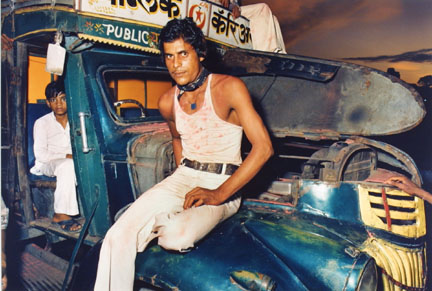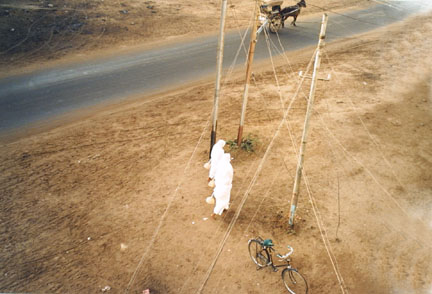About the Photographer
Epstein, Mitch
American, b. 1952
Mitch Epstein was among the first artists in the 1970s to adopt color photography, challenging the prevailing mindset that it was an unrefined and strictly commercial medium. Over the next three decades he has developed a substantial body of work that examines what he has described as "the loaded narratives of everyday life." Epstein's photographs, whether taken in the United States or abroad, demonstrate a sensitivity to social nuances and cultural complexities while capturing moments of striking beauty or gentle irony. Epstein remarks that he is compelled to interpret the world around him, rather than simply record it; his photographs follow from a long-standing documentary tradition, capturing the material world as it exists, yet they integrate the visual impact and consciously layered meanings of large-scale conceptual photography.
After attending Union College, Rhode Island School of Design, and finally Cooper Union in New York, where he was a student of Garry Winogrand, Epstein spent the mid-1970s traveling throughout the United States making photographs. In 1978, following his marriage to Indian filmmaker Mira Nair, Epstein began living in India, where he would be based for the next decade; his photographs from this period, published as In Pursuit of India in 1987, reflect a voyage of a different, more figurative variety. In his afterword to the book, Epstein writes, "It became clear that knowing India was an ongoing journey to which I could apply no formal plan. I simply had to be open to experiences that perhaps would lead me to understand the order, the beauty, and, at times, the paradox in all I was seeing." Photographing public spectacles as well as more intimate moments, the series provide a complicated, elliptical view of collective life in India. Epstein's photographs, such as those of pilgrims in Manabahporam or the Ganpati festival in Bombay, soak up the country's vibrant color palette, capture its dense crowds, and register the intricate coexistence of religious ritual and everyday activities, but they comprise more open-ended depictions rather than representative symbols of an exotic place. Dramatic landscapes and vivid events become a consistent backdrop rather than the central focus as Epstein lets the people anchor his photographs, in groups or alone, as they go about their lives.
Epstein's photographs of India are important precursors to his later projects in Vietnam and the United States, including the series Family Business (2002-2003), which centers on his father's failing business in a Massachusetts town, and American Power (2003-), an expansive examination of U.S. energy consumption and other manifestations of power. The photographs in In Pursuit of India lay a common groundwork in terms of Epstein's sense of color and composition, but they also inform his evolving approach. The artist writes, "My experience internationally has given me a far greater perspective on my own country than I could have had if I had not left and dug deep into other cultures. The pictures I am making today echo those I made in my twenties, and later at fifty." Facilitated in part by a shift from a handheld camera to a more detailed 8x10 view camera, Epstein continues to develop a complex relationship between enticing formal beauty and incisive observation, while fostering an ambiguous balance in his images between a sense of the documentary and implied, hypothetical narratives.




